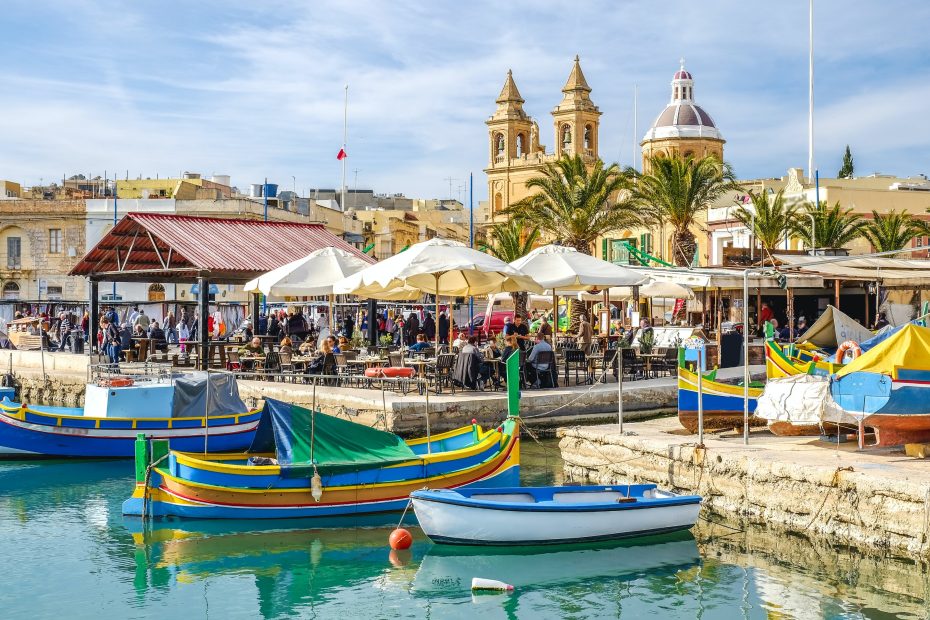Although Malta has become an increasingly popular tourist destination over the years, many visitors only experience the main highlights like Valletta, Mdina, and the Blue Lagoon. Beyond the well-known attractions, however, Malta has a treasure trove of hidden gems waiting to be uncovered by more intrepid travelers. From charming fishing villages to secluded beaches, historic sites off the beaten track to natural wonders, Malta’s best-kept secrets reveal there’s so much more to explore on this Mediterranean island nation.
Table of Contents
Lesser-Known Towns and Villages Worth Discovering
Avoid the bigger cities and head to Malta’s smaller locales to experience local culture. Marsaxlokk, a quaint fishing village in the southeast, captivates with its colorful traditional boats called luzzus. Take a relaxing stroll along the harbor dotted with seafood restaurants. In western Malta, the cliffside town of Dingli offers breathtaking coastal views from Dingli Cliffs. Wander the quiet streets and savor fresh produce from roadside stalls. Mgarr ix-Xini on Gozo island features a picturesque inlet lined with fishing boats surrounded by hills. Enjoy swimming in the inlet’s clear blue waters.
Secret Beaches for Tranquility
Malta has no shortage of stunning beaches, but some of the best are hidden away. Gnejna Bay on the northwest coast boasts golden sands and azure waters with few crowds. Little Armier Bay’s secluded setting makes it perfect for swimming and snorkeling. Slugs Bay on Gozo feels like a private paradise with its pebbly beach nestled between hills. Experience Malta’s beaches in their natural glory by visiting these out-of-the-way spots.
Off the Beaten Path Historical Sites
In addition to its famed historic capital Valletta, Malta contains many fascinating ancient sites unknown to most visitors. The Cart Ruts at Clapham Junction consist of mysterious prehistoric ruts carved into the limestone. Hagar Qim and Mnajdra Temples on the southern coast are among the world’s oldest freestanding structures, predating Stonehenge and the pyramids. Dating back to the 4th century AD, San Pawl Milqi Church ruins contain intricate floor mosaics and offer panoramic views over the countryside.
Secluded Nature Spots for Escaping Crowds
With its arid climate and rocky landscape, Malta boasts unique natural attractions beyond just beaches. Chadwick Lakes filled from underground springs feature shallow azure pools surrounded by garigue vegetation. Wied il-Mielah Window is a natural arch carved out of the cliffs by erosion from the sea, framing views of the Mediterranean. Fomm ir-Rih Bay, accessible only by walking, contains a small sandy beach flanked dramatically by clay slopes. Malta’s secluded nature spots allow you to experience the island’s natural beauty far from the tourist hordes.
Malta’s Best Food Finds
Don’t leave Malta without trying some local delicacies, including those less known to visitors. Fenkata is a slow-cooked rabbit stew infused with wine, garlic and herbs. Prinjolata, a colorful cake made with sponge, chocolate, and candy-coated almonds, is a Carnival treat. Hobz biz-zejt consists of rustic Maltese bread dipped in olive oil and topped with tomatoes, olives, capers and oregano. Sample authentic local cuisine by seeking out these hidden edible gems across the island.
With its rich history, stunning landscapes, and mouthwatering cuisine, Malta offers much more beyond the well-trodden tourist track for travelers looking to uncover its hidden secrets. Venture into charming towns, secluded beaches, ancient ruins, and local eateries to experience the real Malta. As this Mediterranean jewel has so many treasures to uncover, you’ll want to skip the big cities and spend your visit delighting in the island’s best-kept gems.
Frequently Asked Questions
What is the best way to explore Malta’s hidden gems?
Rent a car to freely explore off the beaten path sites across the island. Avoid large group tours and be flexible to uncover unexpected finds. Talking to locals helps discover their favorite hidden spots.
What is the weather like in Malta?
Malta has a sunny Mediterranean climate with hot, dry summers and mild, rainy winters. The sea remains swimmable from May to November. Spring and autumn offer ideal weather in the 70s Fahrenheit.
What language do they speak in Malta?
Maltese and English are the official languages. Most locals speak English fluently, so language barriers are minimal for English speakers. Learning a few Maltese phrases like a simple “thank you” shows goodwill.
What is the best way to get around Malta?
Buses connect major destinations but can be limiting. Renting a car allows the most flexibility to visit off the beaten path sites. Taxis are readily available. Walking in the towns and villages is the best way to discover their charm.
Is Malta expensive to visit?
While not cheap, Malta offers good value compared to many European destinations. Avoiding the luxury hotels and fancy restaurants helps keep costs down. Activities like beachgoing, village strolling, and sightseeing are mostly free.
